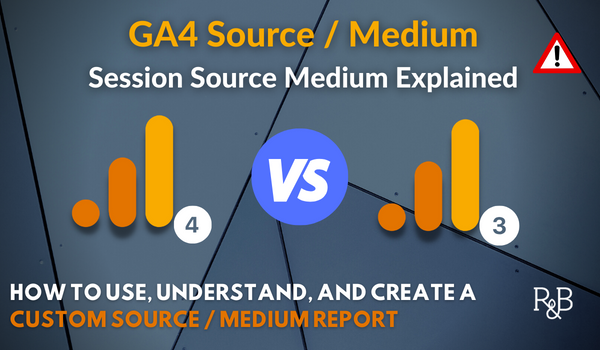Revealing the Influence of Additional Measurement in Google Analytics on Data Evaluation and Insights
In the world of data analytics, the application of secondary measurements within Google Analytics has emerged as a crucial device for removing much deeper insights and unraveling complicated patterns that might or else stay covered. By peeling back the layers of primary information sets, second dimensions offer a nuanced point of view that improves the understanding of individual behavior, website performance, and the performance of marketing methods. However, real effect and untapped possibility of additional measurements are typically underestimated, overshadowed by the attraction of primary metrics. As we navigate with the detailed landscape of information analysis, the value of additional measurements ends up being progressively apparent, shedding light on important details that hold the key to educated decision-making and calculated optimizations.
Discovering the Principle of Secondary Measurements
Second measurements in Google Analytics offer additional insights by allowing customers to examine key data in combination with a second attribute. By including second measurements, users can dive much deeper right into the information and uncover beneficial relationships that may or else go undetected - what is a secondary dimension in google analytics.
By checking out the numerous additional measurements readily available in Google Analytics, users can open new insights and optimize their digital advertising initiatives. In significance, second measurements offer as a powerful tool for enhancing information evaluation and driving actionable outcomes.
Enhancing Data Interpretation With Additional Dimensions
Having established the foundational understanding of secondary measurements in Google Analytics and their pivotal function in data evaluation, the emphasis now shifts in the direction of leveraging these additional features to improve the interpretation of analytics data (what is a secondary dimension in google analytics). By incorporating second measurements into data evaluation, experts can obtain much deeper understandings into user habits, internet site efficiency, and advertising and marketing performance

In addition, second dimensions aid in contextualizing key data metrics by supplying added layers of info. This contextualization help in understanding the 'why' behind the data patterns, assisting analysts make educated optimizations and choices to boost general efficiency. Eventually, incorporating secondary measurements enhances the information interpretation process, causing even more calculated activities and meaningful understandings.
Discovering Hidden Insights Via Secondary Dimensions
Checking out the depths of analytics information with secondary measurements reveals beneficial insights that would otherwise remain obscured. By incorporating secondary measurements in Google Analytics, services can discover covert patterns, trends, and connections that provide an even more detailed understanding of customer actions and internet site performance. These added layers of information enable experts to delve deeper right into the primary measurements, such as traffic sources or touchdown pages, and obtain a more nuanced point of view on how various variables interact with each other.
With the use of additional dimensions, experts can sector and compare information throughout numerous dimensions, enabling them to recognize particular factors that influence customer involvement, conversion prices, and general success metrics. By combining the main dimension of 'device group' with the additional dimension of 'age group,' online marketers can determine which age demographics like accessing the internet site via mobile tools versus desktops. This degree of granularity equips companies to make data-driven decisions and enhance their strategies navigate to this website for much better outcomes. Inevitably, discovering covert understandings through additional dimensions improves the depth and precision of data evaluation, causing more educated decision-making and enhanced efficiency results.
Leveraging Additional Measurements for Actionable Analytics
Structure upon the understandings introduced through secondary measurements in Google Analytics, organizations can currently harness this enriched data landscape to drive actionable analytics and critical decision-making. By leveraging additional measurements, organizations can dive deeper into their data to extract useful patterns, trends, and relationships that may have formerly gone undetected. This deeper degree of analysis enables services to gain an extra comprehensive understanding of individual actions, campaign performance, and total site performance.
One key advantage of utilizing secondary dimensions for workable analytics is the ability to section information based upon certain standards. This division allows businesses to customize their techniques and campaigns to various target market groups, bring about much more targeted and efficient advertising and marketing efforts - what is a secondary dimension in google analytics. In addition, additional dimensions offer an even more alternative view of user interactions, making it possible for businesses to enhance their internet site content, design, and general customer experience
Optimizing Decision-Making With Secondary Measurements
To improve calculated decision-making in analytics, leveraging second measurements in Google Analytics can give an extra nuanced point of view on user actions and project efficiency. By including additional dimensions into data analysis, organizations can delve much deeper right into the specifics of their website visitors' communications and engagement patterns. This extra layer of details allows for an extra detailed understanding of just how various variables, such as demographics, tools, or traffic resources, effect vital efficiency signs.

Conclusion
To conclude, making use of second measurements in Google Analytics plays a critical function in boosting information evaluation and uncovering surprise insights. By discovering this idea, one can gain a much deeper understanding of user actions and make educated decisions based on actionable analytics. Leveraging secondary dimensions enables for a much more detailed analysis of data and optimizes the performance of decision-making processes.
